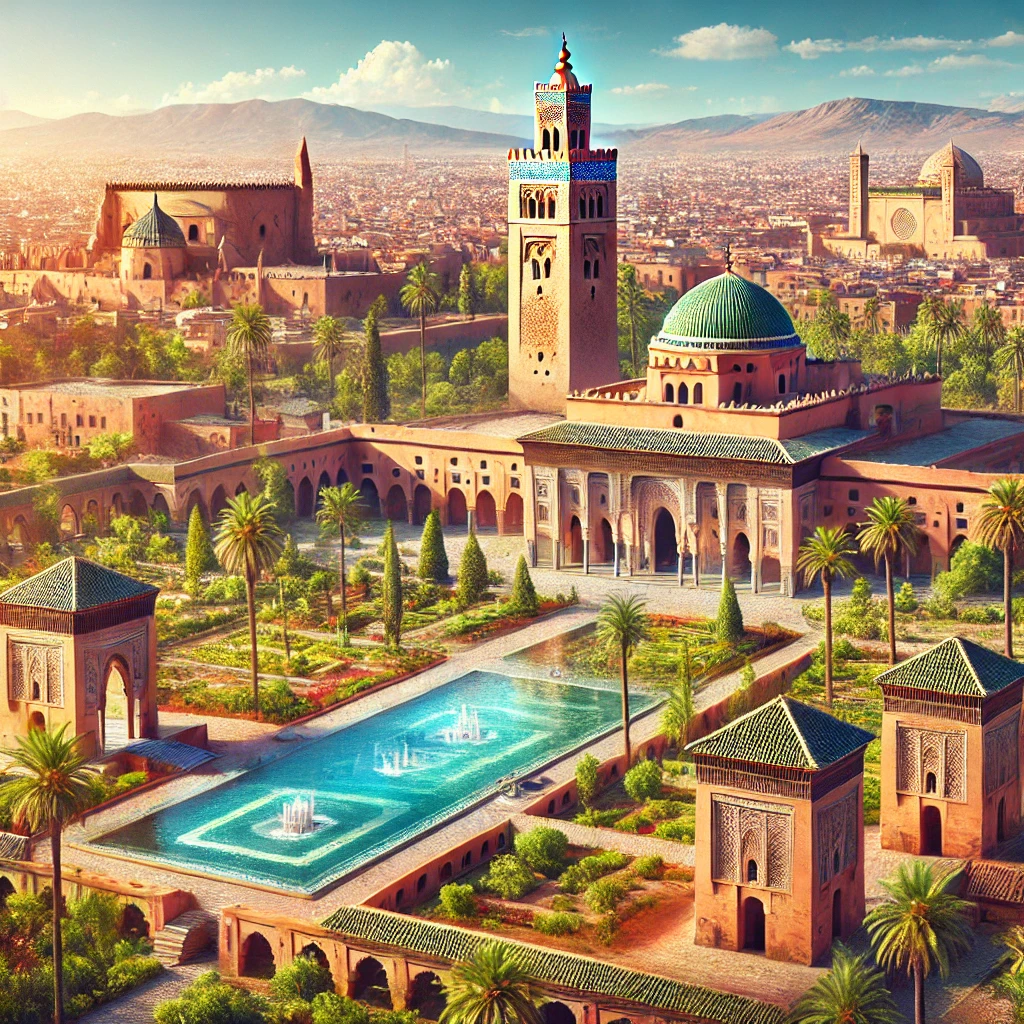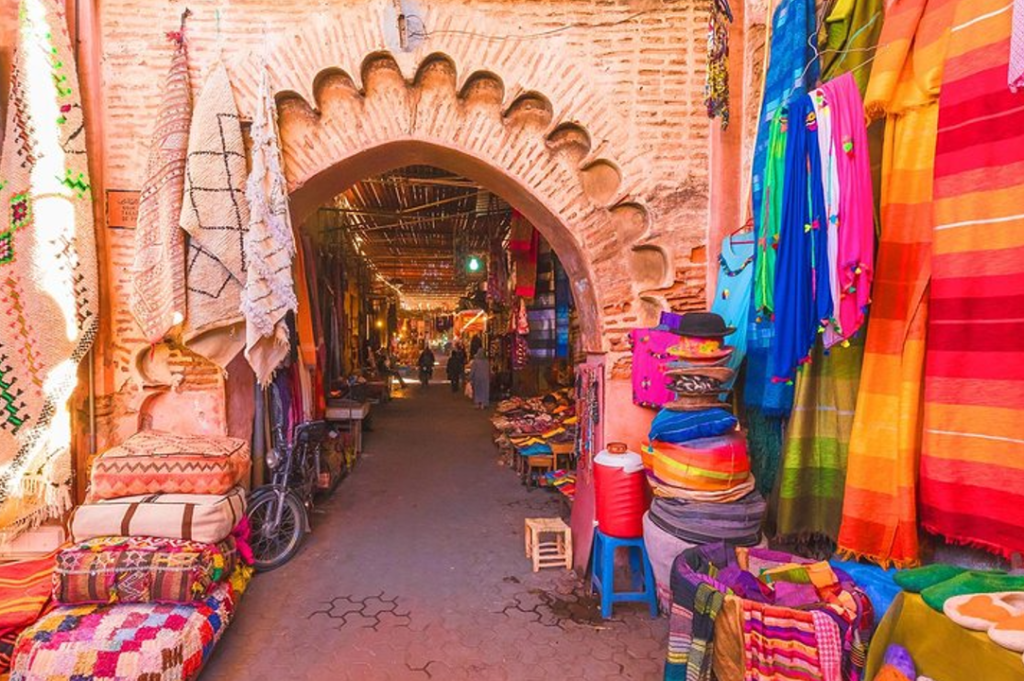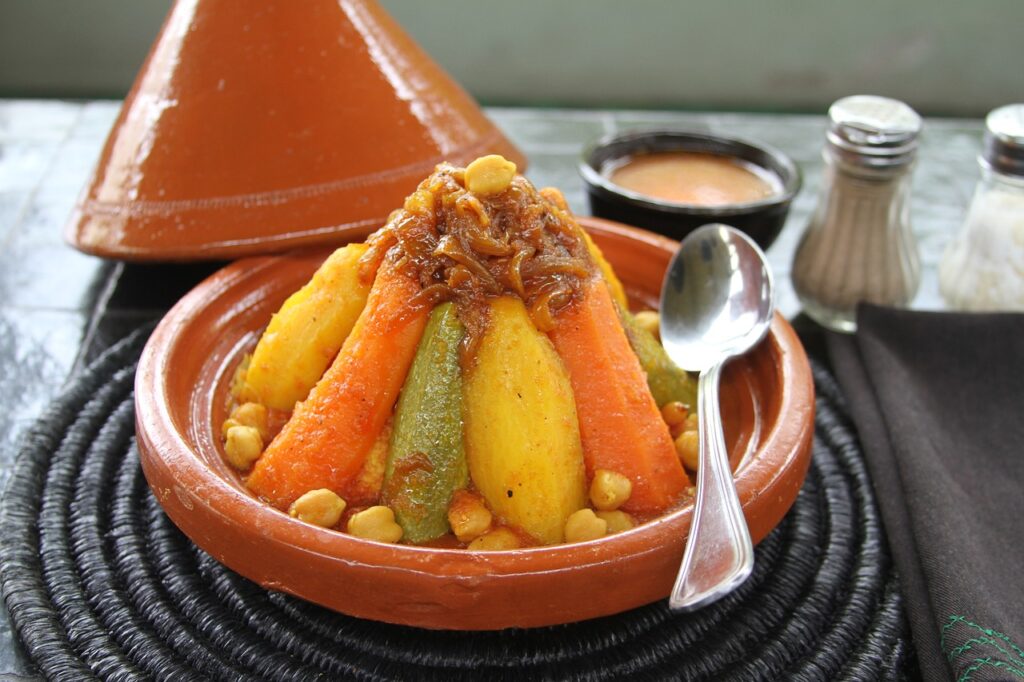Moroccan cooking is a vibrant celebration of spices, flavors, and traditions. The cuisine of Morocco offers a unique culinary experience that tantalizes the taste buds with its diverse and aromatic dishes. From the bustling souks of Marrakech to the tranquil landscapes of the Atlas Mountains, Moroccan cooking embodies a rich cultural heritage that is both savory and sweet. In this blog, we’ll dive into the essence of Moroccan cooking, highlighting its most iconic dishes, spices, and cooking techniques that make it a culinary treasure trove.
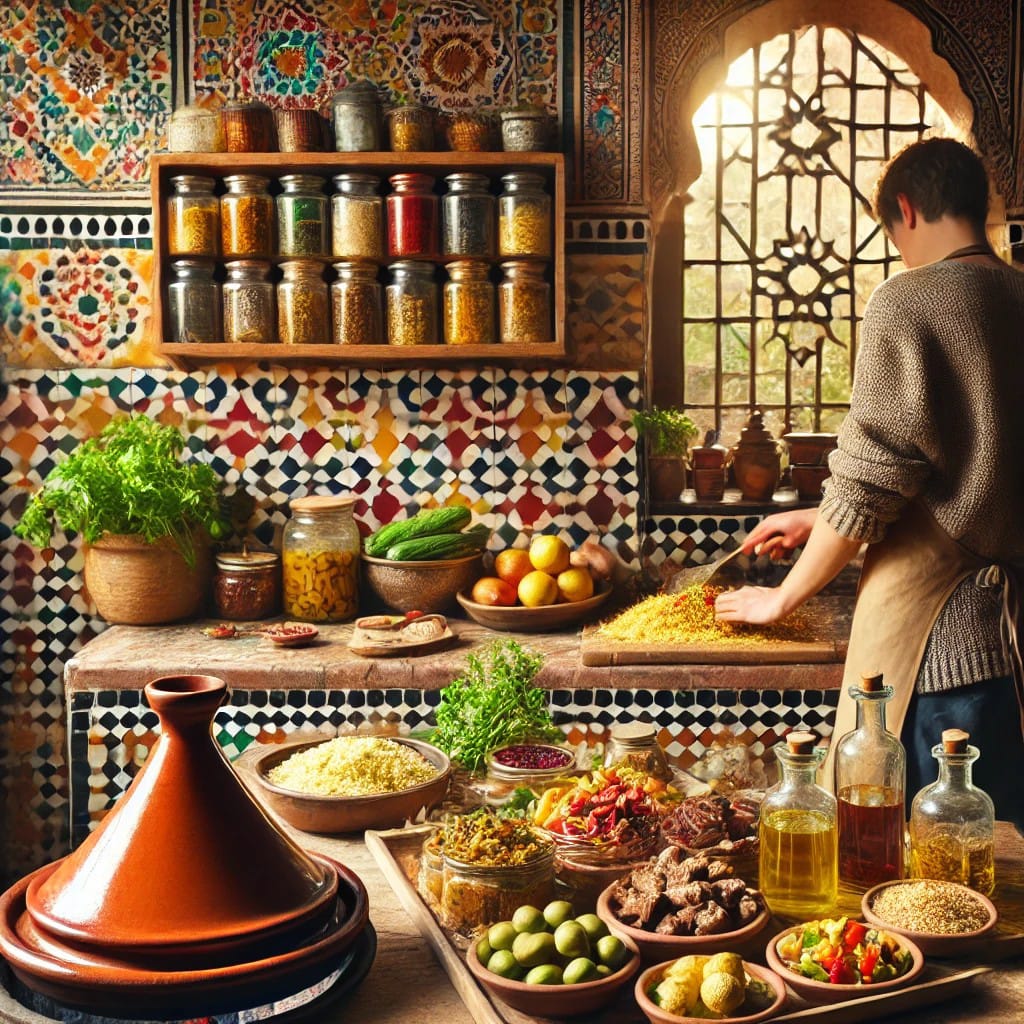
The Essence of Moroccan Cooking
Moroccan cooking is renowned for its bold use of spices and herbs. The cuisine blends influences from Berber, Arab, and Mediterranean cultures, creating a rich tapestry of flavors. Key ingredients in Moroccan cooking include saffron, cumin, coriander, and cinnamon. These spices are expertly combined to create dishes that are both aromatic and flavorful. The art of Moroccan cooking lies in the balance of these spices, which transforms simple ingredients into extraordinary meals.
Traditional Moroccan Dishes
- Tagine: The Crown Jewel of Moroccan Cooking

The tagine is arguably the most iconic dish in Moroccan cooking. Named after the earthenware pot in which it is cooked, a tagine is a slow-cooked stew that often features lamb, chicken, or seafood combined with fruits, nuts, and a blend of spices. The slow-cooking process allows the flavors to meld together beautifully, resulting in a tender and flavorful dish.
- Couscous: A Staple of Moroccan Cooking
Couscous is another staple of Moroccan cooking. Made from steamed semolina wheat, couscous is light and fluffy, making it the perfect accompaniment to a variety of dishes. It is commonly served with meat or vegetable stews and garnished with fresh herbs and spices. Couscous can also be enjoyed as a salad or as a base for other dishes.
- Harira: The Heartwarming Soup of Moroccan Cooking
Harira is a traditional Moroccan soup that is especially popular during Ramadan. This hearty soup is made with tomatoes, lentils, chickpeas, and a mix of spices, creating a rich and satisfying dish. Harira is often served with dates and bread, making it a complete meal that is both nourishing and comforting.
- Pastilla: A Sweet and Savory Delight
Pastilla is a unique Moroccan dish that combines sweet and savory flavors. This flaky pastry is typically filled with spiced pigeon or chicken and layered with almonds and cinnamon. The result is a delicate and flavorful dish that is often served at special occasions and celebrations.
The Spices of Moroccan Cooking
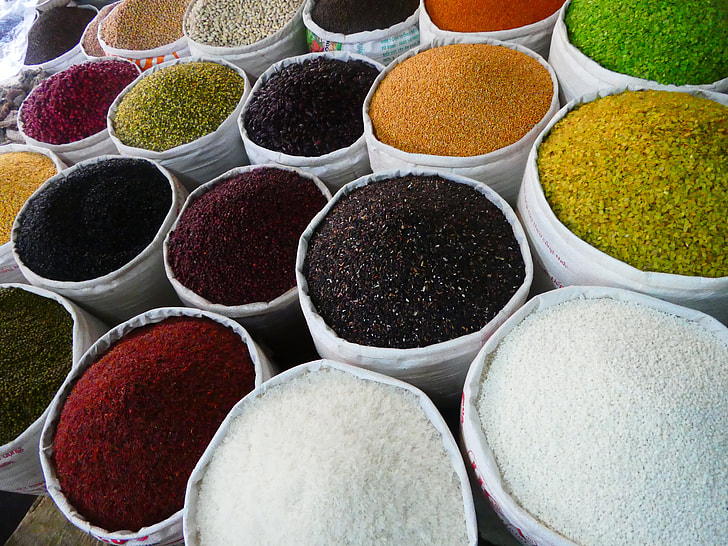
The magic of Moroccan cooking lies in its use of spices. Moroccan spice blends, such as Ras el Hanout, are a hallmark of the cuisine. Ras el Hanout is a complex mixture of spices, including cardamom, cloves, and nutmeg, which adds depth and warmth to Moroccan dishes. Other essential spices in Moroccan cooking include turmeric, paprika, and ginger. These spices are used both individually and in blends to create the distinctive flavors that define Moroccan cuisine.
Moroccan Cooking Techniques
The techniques used in Moroccan cooking are as important as the ingredients. Slow cooking is a common method, allowing flavors to develop and meld together. The use of a tagine pot is central to this technique, as it retains moisture and distributes heat evenly. Moroccan cooking also involves grilling, roasting, and steaming, each method contributing to the diverse range of textures and flavors in the cuisine.
Moroccan Cooking Traditions
Moroccan cooking is deeply intertwined with cultural traditions and communal gatherings. Meals are often shared with family and friends, reflecting the importance of hospitality in Moroccan culture. Traditional Moroccan meals are usually served with bread, which is used to scoop up stews and tagines. The communal aspect of Moroccan cooking enhances the dining experience, making it both a social and culinary delight.
How to Experience Moroccan Cooking at Home
For those looking to recreate Moroccan cooking at home, start by sourcing authentic spices and ingredients. Many of these can be found at specialty grocery stores or online. Experiment with traditional recipes and cooking techniques to bring the flavors of Morocco to your kitchen. Consider taking a Moroccan cooking class or watching instructional videos to learn more about the techniques and ingredients used in this flavorful cuisine.
Conclusion: Embrace the Flavors of Moroccan Cooking
Moroccan cooking offers a delightful journey through flavors and traditions that are as rich and diverse as the country itself. Whether you’re savoring a fragrant tagine, enjoying a bowl of harira, or indulging in a sweet and savory pastilla, Moroccan cooking provides a culinary adventure that is both satisfying and memorable. Embrace the spices, techniques, and traditions of Moroccan cooking to bring a taste of Morocco to your table.
By exploring Moroccan cooking, you not only experience a unique and delicious cuisine but also gain insight into the cultural heritage of Morocco. So, gather your ingredients, heat up your tagine, and embark on a flavorful journey into the heart of Moroccan cooking.
